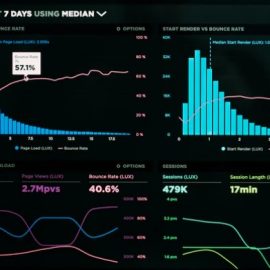

This article is an excerpt from the Shortform book guide to "The Book on Rental Property Investing" by Brandon Turner. Shortform has the world's best summaries and analyses of books you should be reading.
Like this article? Sign up for a free trial here.
What are the different rental property types to choose from? How valuable are each of these property types?
Investors should consider what type of property they’re interested in renting. Each has advantages and disadvantages: The Book on Rental Property Investing by Brandon Turner suggests considering things like maintenance needs, financing options, and competition when choosing what’s right for you.
Below we dive into the various rental property types and what they bring to the table.
Choosing a Property Type
A common rental property type is a single-family home. This type of property draws long-term tenants and is often more affordable than other property types (for instance, apartment buildings). Also, you’ll control the whole property, meaning it’s easier to manage the grounds and run appreciation projects. However, you may face more competition when buying these properties, primarily from homeowners. It can also be hard to build wealth investing in these properties, as conventional lenders usually only allow you to finance limited properties at a time.
(Shortform note: In the US, demand for single-family homes has grown significantly over the first decades of the 21st century, particularly among millennials. One reason for this may be the preference young adults have for renting over owning property. Renting a home allows them to experience a more traditional single-family space while also avoiding rising house prices and lending rates. Renting also allows them to maintain more flexible living arrangements and financial commitments. This could partially explain the fact that, though the 2010s saw a major recession, single-family rental units kept rising in value in terms of both rent and appreciation.)
Turner explains that multi-family homes have multiple units, potentially offering more rent. You’ll also face less homeowner competition when buying one. However, the more units involved, the more maintenance is typically required, and the higher the purchase price. Additionally, you’ll face competition from other professional investors.
(Shortform note: An additional benefit of multi-family properties is that they allow you to benefit from economies of scale in ways single-family ones don’t. In other words, you can spread costs out over multiple income generators (units) at the same time. Major expenses, such as replacing a water heater for a given building, seem more manageable when understood on a by-unit basis, especially when a multi-family property like a commercial apartment building can contain dozens or more units.)
Condos and townhouses are both complex-based properties containing multiple units, often with different individuals owning different units. Turner notes that they both require low levels of maintenance and have low upkeep expenses. However, they’re typically overseen by homeowner associations (HOAs) that significantly limit your control over the property and charge substantial fees.
(Shortform note: While working with HOAs may be risky due to the challenges these groups can pose, note that HOAs take on risk too when allowing rental property investors to purchase units. For instance, HOAs have less direct control over the individuals allowed into the community, since the landlord chooses the tenants. This can lead to increased illicit activity or security issues, which lowers property values, and increased liability for the association itself. The HOA may then try to reduce risk by introducing its own specific rental policies (such as the length of possible rental terms) and approval criteria.)
Some investors opt for commercial rather than residential properties. Turner argues that commercial tenants tend to require less fuss than residential ones, with fewer late-night maintenance requests and more reliably punctual rent payments. That said, commercial properties tend to offer lower rates of return. Furthermore, initial costs are frequently higher. Finally, vacant yet specialized professional spaces can be hard to find the right tenant for, meaning longer periods without rent.
| Commercial Properties Can Mean More Effort Not all experts agree with Turner that commercial properties require less time commitment. They argue that demands on landlords can actually be higher with commercial properties, due in part to the increased public safety concerns accompanying employees and customers using retail spaces. Also, commercial landlords often manage multiple leases and are responsible for determining common area maintenance (CAM)—work and fees associated with shared portions of a property, such as parking lots, utilities, or security features. All of these duties taken together can make commercial rental property management more active than passive. Taken along with the financial costs that Turner mentions, this may make commercial properties unattractively challenging for first-time investors. |

———End of Preview———
Like what you just read? Read the rest of the world's best book summary and analysis of Brandon Turner's "The Book on Rental Property Investing" at Shortform.
Here's what you'll find in our full The Book on Rental Property Investing summary:
- An educational guide to locating, buying, and managing real estate property
- The major pitfalls new investors encounter and how to overcome them
- How to hunt down, select, finance, and purchase your first property






